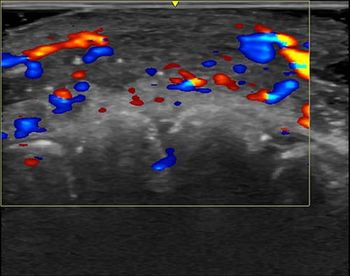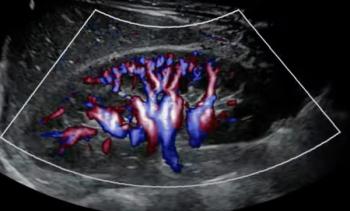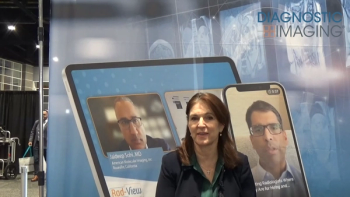
Toshiba beefs up subsecond CT lineup with launch of Asteion at ECR meeting
Multislice option should be available by the end of 1999Toshiba plans to use this month’s European Congress of Radiology to showcase its latest subsecond CT offerings. The new scanner line, called Asteion, will be offered at a price point
Multislice option should be available by the end of 1999
Toshiba plans to use this months European Congress of Radiology to showcase its latest subsecond CT offerings. The new scanner line, called Asteion, will be offered at a price point below that of the companys superpremium Aquilion line, but, like Aquilion, will support multislice scanning when Toshiba releases that technology later this year.
The Japanese vendors European unit, Toshiba Medical Systems Europe of Zoetermeer, the Netherlands, will highlight two scanners in the Asteion line: Asteion VI and Asteion VR. The scanners offer routine 0.75-second rotation times, with partial reconstruction times as short as half a second using newly developed Toshiba image processing algorithms. They also support Toshibas Aspire CI real-time scanning protocol, and come equipped with the companys HeliCool x-ray tubes, rated at 4 MHU.
Of the two scanners, the VR offering is the more powerful, with a 48 kW x-ray generator, one-second reconstruction times, and real-time helical scanning at eight frames per second offered as part of the standard product configuration. Asteion VI features a 36 kW generator and three-second reconstruction times.
The new Asteion scanners will give Toshiba the ability to offer both subsecond and multislice scanning at new price points. Toshiba introduced its Aquilion scanner last September as a 0.5-second scanner that will serve as the platform for a multislice option to be introduced later this year (SCAN 9/16/98). But Aquilions price tag, of around $1.3 million, could put it out of reach of some potential buyers.
The Asteion scanners could fill the price gap between conventional single-slice scanners and Aquilion. Although Toshiba did not release a price tag for Asteion, the scanner will most likely sell for less than Aquilion.
There are some commonalities between Asteion and Aquilion. They have the same type of detector and share the same Silicon Graphics console and user interface. The most fundamental differences are in Aquilions faster rotation time and its use of a more powerful 60 kW generator and 7.5 MHU x-ray tube.
Asteion sales have already begun in Europe, TMSE executives said. Multislice scanning should be available as an option on the Asteion scanners by the end of this year.
Newsletter
Stay at the forefront of radiology with the Diagnostic Imaging newsletter, delivering the latest news, clinical insights, and imaging advancements for today’s radiologists.




























